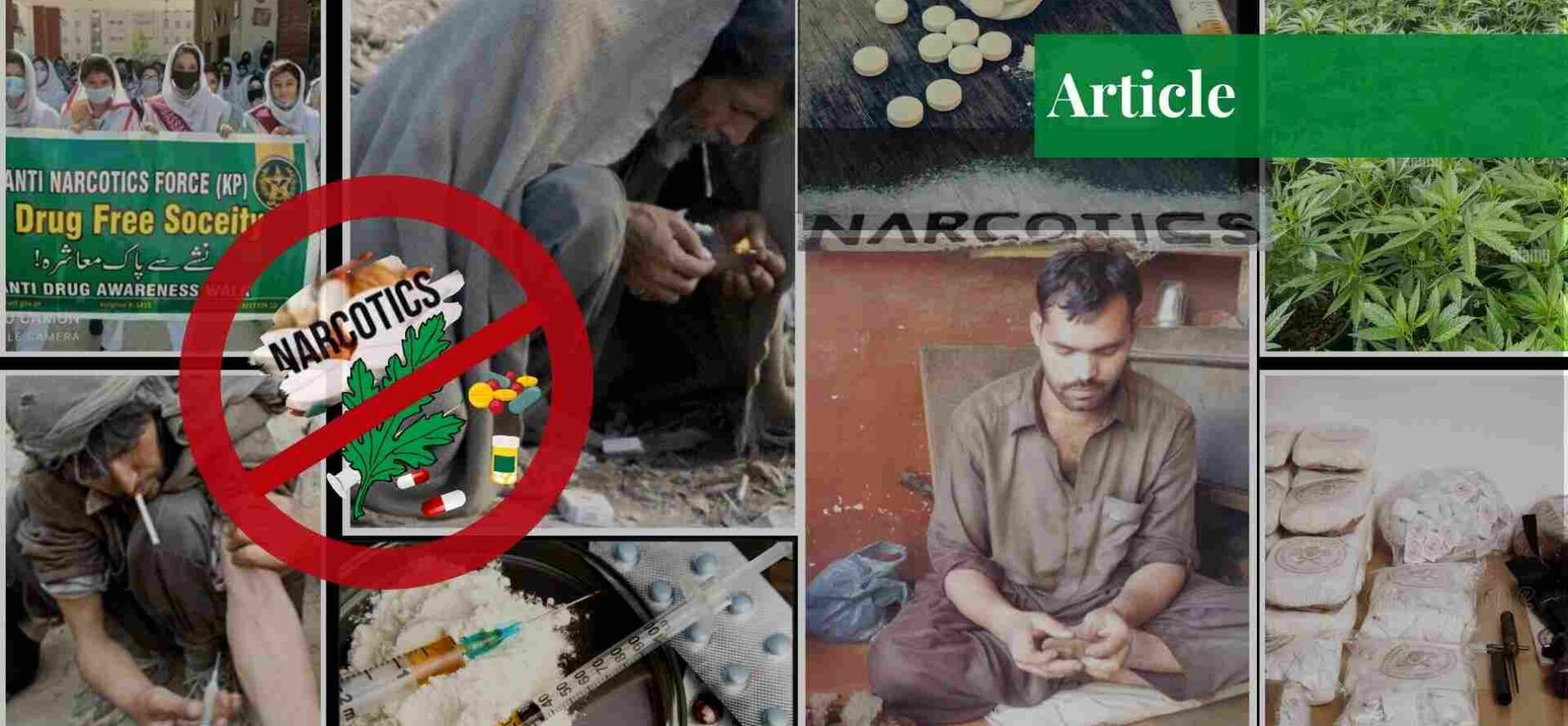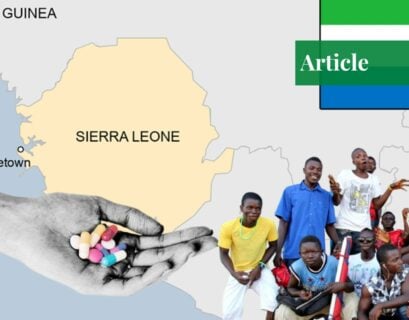Mr. Teepu Rehman Abbasi is an Aitchisonian who graduated with an LL.B. degree from the University of London. He is a practicing lawyer and an enrolled member of the Islamabad Bar Council. His interests include, but are not limited to, international relations, the rising issues in Pakistan, and human rights laws.
Drug Trade in Pakistan
The geographic landscape of Pakistan makes it a desirable transit hub for global trade. With a central and accessible location, it becomes more appealing to cartels and gangs that intend to exploit the country’s trade routes for illegal purposes. As per the UNODC report in 2018, Afghanistan has continued to be the world’s largest producer and cultivator of opium. This makes Pakistan increasingly vulnerable.
The Afghanistan-Pakistan border runs 2,400 kilometers long. Although this stretch of land is fenced, the remote and challenging terrain makes the border difficult to regulate and guard. This also makes it easier for Pakistan to be exploited by international drug traffickers.
The primary drug cultivated in Pakistan is opium (poppy), which is refined into hashish or charas. The hectares on which poppy is cultivated are in a constant state of flux in Pakistan. Whenever there has been a spike in production, the influence of Afghanistan is largely to blame. Despite the decline of cultivation in Pakistan, the transit use of the country has led to an influx of all kinds of drugs.
To curb this drug infestation, Pakistan has attempted to strengthen regulation and border controls especially KP province by introducing legislation and establishing units that counteract the illegal drug trade such as the Anti-Narcotics Force (ANF). Ironically, this has given rise to an increase in the prices and profits of opium as well as other drugs. For the successful interception of drug trafficking, the relevant authorities in Pakistan must adapt and familiarize themselves with changing methods and trends of trafficking, which can include, but are not limited to, the use of women and children as drug mules.
Khyber Pakhtunkhwa’s Drug Problem
In 2007, roughly 70 percent of opium was being cultivated in the five provinces of Afghanistan situated along the Pakistani border. In the same year, 13,736 kg of heroin/morphine, 101,069kg of cannabis, and 15,362kg of opium were seized by authorities in Pakistan. These figures represent the level of diffusion between the two borders.
The hotspot for the cultivation of narcotics like opium has been what used to be the Federally Administered Tribal Areas (FATA), now part of Khyber Pakhtunkhwa (KP), in Pakistan. The counter-terrorism operations along the Pakistan-Afghanistan border areas were factors that detrimentally affected the fight against opium cultivation. The new wave of drugs infiltrating the illegal trade market are synthetic drugs, like ecstasy pills and methamphetamine (“ice”).
Experts believe that the ratio of ice users among the youth of Pakistan, specifically in KP, stands at 10.7 percent in comparison to 4.3 to 5.4 percent in other provinces. A private facility in Peshawar, Dost Welfare Foundation (DWF), has disclosed that drug addicts who approached them for help included ice users. The use of ice has skyrocketed among KP’s youth and opium remains a gateway to producing methamphetamine.
A UNODC survey of Pakistan in 2013 estimated that “6.7 million people in the country used a controlled substance during the previous year.” The report highlighted that “Pakistan in general and Khyber Pakhtunkhwa in particular are in the grip of massive drug addiction, which is especially affecting the young generation adversely.” The report also emphasized that rehabilitation facilities in the area are “almost non-existent” as well as unaffordable for the majority of residents.
Dr. Parveen Azeem Khan explained that although the provincial government allocated Rs.150 million for the treatment and rehabilitation of drug addicts in the provinces, there is a lack of funding and support for the Dost Welfare Foundation. They are facilitating roughly 15-20 youth addicts and 60-70 adults on their own resources. According to multiple sources, the Taliban takeover of Afghanistan in August 2021 has allegedly expedited the cultivation, illegal sale, and trafficking of opium. Thus, the price of opium, which is refined into heroin either in Afghanistan, Pakistan, or Iran before infiltrating Europe, has more than tripled.
According to police officials, more than 11,000 drug dealers, smugglers, and manufacturers were arrested while over 10,000 kg of drugs were confiscated in the year 2020 alone. A recent initiative that has started is the “Ice-free Peshawar” campaign which involves establishing special teams to target smugglers and dealers. Such measures help improve the situation, however, they are not permanent solutions.
There are several studies regarding the psychological and physical impacts caused by narcotics, especially in KP. The main issues remain to be a lack of funding, law enforcement, border control, and strict measures regarding the influx of people and substances through the remote regions along the border. On top of that, the drug problem is extremely immersed within the society and poverty aids it to thrive. The government has enacted The Khyber Pakhtunkhwa Control of Narcotic Substances Act, 2019, however, its enforcement is yet to be seen.
Afghanistan’s Ban on Opium Cultivation
As far as the Taliban are concerned, their spokesperson Zabihullah Mujahid explained that “when we were in power before there was no production of drugs.” The Taliban said they would “bring opium cultivation to zero again.” This may hold some weightage since in 2001 a UN report said that Taliban-controlled areas of Afghanistan had “near total success” with the ban on opium cultivation.
The leader of the Taliban, Haibtullah Akhundzada strictly prohibited the cultivation of poppy, ordering that violators of the law would find their fields destroyed and would face strict penal sanctions. Despite the economic drawbacks of such a prohibition, the commitment to ban opium and ephedra cultivation by the Taliban government is commendable. According to BCC officials, a significant decrease in poppy cultivation has indeed been witnessed.
Conclusion
Following suit, in May 2023, an anti-narcotics campaign was initiated across the province by the caretaker chief minister, Muhammad Azam Khan, to set KP free from drugs. The excise and narcotics control department confiscated 2001 kg of hashish, 209 kg of heroin, 304 kg of opium, and 69 kg of ice, between July 2022 and April 2023, according to official data provided by the Associated Press of Pakistan. Additionally, 217 drug cases were reported at that time, with 239 suspects arrested. With such developments on legislative and ground levels, the future of drug use in KP seems bright. Perhaps Pakistan can continue this decline to provide a drug-free future for generations to come.
If you want to submit your articles, research papers, and book reviews, please check the Submissions page.
The views and opinions expressed in this article/paper are the author’s own and do not necessarily reflect the editorial position of Paradigm Shift.



















